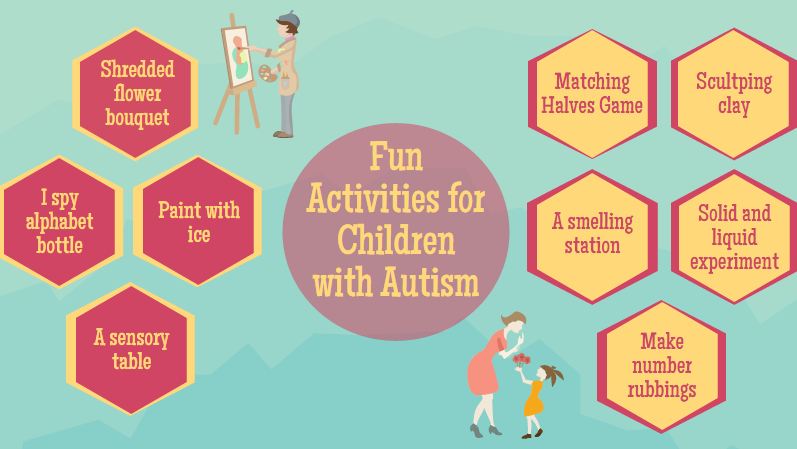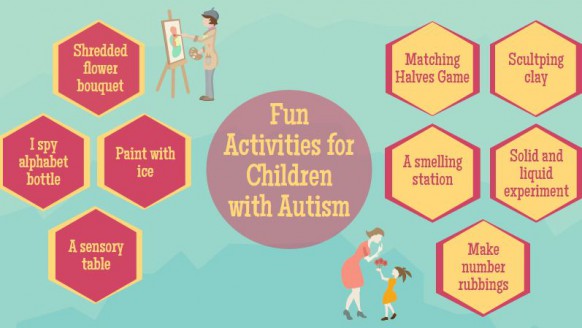Fun Activities for Children With Autism
Published by SchoolAdvisor | Feb 11, 2016One of the more common disabilities that occur in children is the Autism Spectrum Disorder. It is estimated that 1 in 68 newborns will grow up to become autistic. In Malaysia alone, approximately 9000 children are born with autism every year.
Autistic children often have difficulty in everyday social interactions and the inability to relate to their surrounding and also the people around them. Autism is a spectrum condition which means that the severity of the condition varies in autistic children in the sense that some might have a more serious case of autism than others.
Asperger's syndrome, for example, is a form of autism. It is known as a hidden disability because not many people can tell if someone has difficulties in socially relating to other people. They rarely have learning difficulties that are usually associated with autism because their biggest issues lie in trying to survive interactions without coming off as socially abnormal.
Characteristics of autism vary from one autistic person to another. Some may experience all the characteristics listed and some may not, depending on the severity of the condition. The most common characteristics in autistic children are:
- Very little to no eye contact
- Resistance to being held
- Does not respond to their own name
- Prefers food with certain textures
- Repetitive behavior such as arranging objects in a straight line/stacking objects
- Shows little emotion/empathy
- Focuses on certain parts of toys and not the toy itself
Early and intensive treatment can prove to be a major life changer for these kids as they will be able to improve their ability to communicate and relate with others as they grow older.
Physical activities can be a great learning experience for kids with autism as the opportunity to explore shapes, colors and textures can help improve their awareness of the surrounding besides creating loads of fun!

This activity involves ripping and shredding colored papers and arranging them so they will look like a bouquet of flowers. Handling paper and manipulating shapes and sizes will also be a great sensory experience for them!
Nothing is more attractive than floating sequins and glitters in a bottle of water and corn starch mixture. You can even include small toys, figurines or even alphabets to help keep them engaged and focused the fun way.
Painting and coloring are two of the most popular activities for kids and this list will not be complete without it. The only twist is that the paint will be in solid form so they can observe the change from solid to liquid and solid again.
Children with autism experience using their 5 senses differently than we do. They are highly affected by texture and would enjoy activities that involve digging, squishing and pouring. A sensory table would be perfect for them to engage with their sense of touch, hearing and sight.
This simple game can introduce them to the concept of puzzles and problem solving besides satisfying the craving that many autistic children have for order and simplicity. This activity only requires a few craft sticks and different colored markers that will be used to mark two sticks with the same color.
Known as a great way to improve motor skill control, sculpting clay can also be an interactive activity whereby kids will be given the freedom to sculpt clay into flowers, trees and anything else that they can see outdoors. This can also be a good observational activity.
Tickle the whole family's sense of smell with this fun activity. Help your kid set up a smelling station using food and spices of their choice then get the whole family to gather and take turns guessing what's hidden in the jars.
Liquid? Not really? Solid? But it drips! This exciting activity can teach them about the characteristics of solid and liquid and is extremely easy to make because all you will need is conrstarch and water.
Kids and crayons are literally inseparable so might as well put this art streak to good use by making number rubbings using objects you can find around the house such as coins, leaves and sandpaper. This activity helps to improve eye-hand coordination and get the small muscles moving!
Recent Articles
- Beaconhouse Gasing Preschool: Leading Transformation with IEYC Curriculum Introduction
- BSKL and Charterhouse Grad Scores Dream Spot at New York University
- Leannie Liew’s Journey at Cempaka International School: Pushing Boundaries and Discovering Potential
- VOX ISKL: Leveraging Language Learning
- From elc to Harvard: Thamini Vijeyasingam’s Journey to Ivy League Excellence










 Login with Google
Login with Google